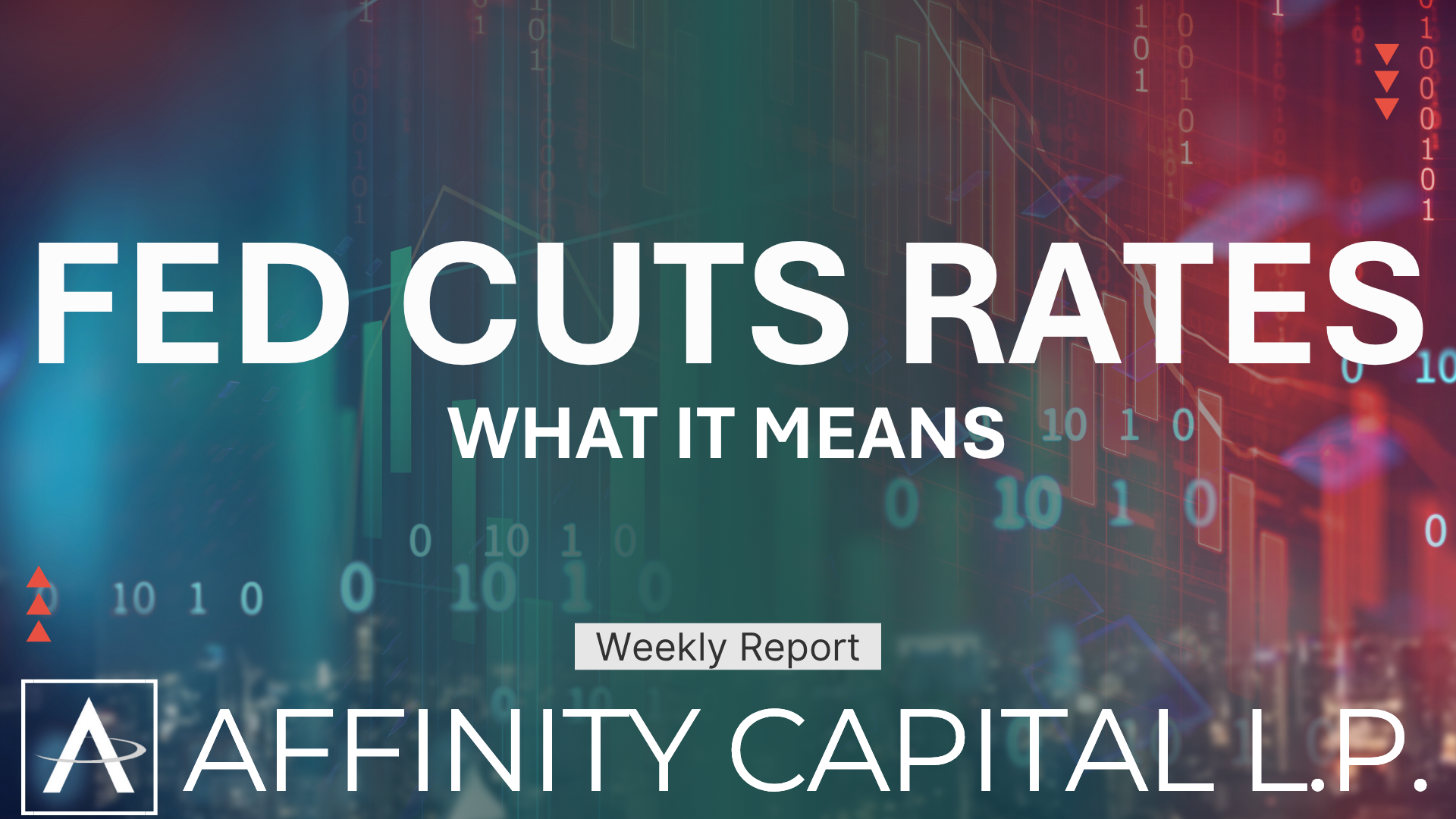Market Flash April 4, 2025

We woke up this morning to another market sell-off. Our main point this morning is for you to not equate your portfolios to the major market indices . We believe our portfolios are well positioned for this sell-off and we see great opportunities for long-term investors. There are a lot of numbers within this Market Flash , but we trust that they are presented well. Prior to yesterday, we averaged 25% to 30% in cash, much of it due to sales of technology heavy funds throughout the first quarter. We took advantage of yesterday's sell-off to reposition our portfolios.
As we write this morning, our Affinity Capital Income & Appreciation & Capital Appreciation Portfolios are averaging (-1.37%) versus (-4.16%) for the S&P 500 for the morning. An advantage of 2.79% or a 67% ratio to the Index. Mentioned below: While we would like to see some support in the markets around these levels, we could be at the bottom of this sell-off or the top of the next leg and experience tells us that gravity is quite a weighty force!
Portfolio Notes:
-
We remain on average 20% in Cash
-
We are out of Small and Mid Cap positions (See Russell 2000 Index performance below)
-
We average 30% to 40% in Fixed Income (Bonds)
-
We added partial positions of high-quality individual stocks to our portfolio. 4 of 5 were positive for the day yesterday.
Your portfolios are well positioned for this sell-off and we see great opportunities for long-term investors. As we speak with friends in the investment community as well as others with accounts elsewhere, the consensus is to "just ride it out". The math is simple, over time, it is much more difficult to recover from losses than participate fully in a bull market. We will be working hard to position your hard-earned assets for long-term common-sense income and growth.
As noted in our Affinity Capital Market Flash on Tuesday with a quote from our Comment on March 10th:
Throughout the first quarter we have been selling mostly technology-related positions and building up cash in our client accounts, averaging 25% - 30%. As noted in our previous Affinity Capital Market Flash of March 10th Market Flash | Affinity Capital , our view on the major market indices was as follows:
-
The tech-heavy Nasdaq will likely see another 5% to 9% downside.
-
The Dow Jones Industrial Average has reached a support level. While we would like to see it hold here, the next drop could be another 4.5% to 5 %. For perspective that would be in the area of another 2000 points to the downside – which sounds a bit scarier than 5%
-
The S&P 500 may see another 5% to the downside.
Yesterday saw the major averages sell-off significantly:
-
The S&P 500 fell 274.45 points, or 4.8%, to 5,396.52.
-
The Dow Jones Industrial Average fell 1,679.39 points, or 4%, to 40,545.93.
-
The Nasdaq composite fell 1,050.44 points, or 6%, to 16,550.61.
-
The Russell 2000 index of smaller companies fell 134.82 points, or 6.6%, to 1,910.55.
As we write this morning; the major averages are again selling off. While we would like to see some support in the markets around these levels we could be at the bottom of this sell-off or the top of the next leg.
-
The S&P 500 is off -224.35 (-4.16%)
-
This is a current support level
-
We see the next support level at another (-4.88%) to -(6.78%) to the downside
-
-
The Dow Jones Industrial Average is off -1,417.52 (-3.50%)
-
Current support level is another (- 2.44%)
-
We see the next support level at another (-3.80%) to the downside
-
-
The Nasdaq composite is off -764.00 (-4.62%)
-
Current support level is between this current level and another (- 2.44%) to the downside
-
We see the next support level at another (-5.62%) to the downside
-
-
** Please note that these are not crystal ball predictions, they are simply target areas or mile-markers used as just one piece of information to evaluate the markets.
To note a well-known quote among investors, "Be greedy when others are fearful and fearful when others are greedy."
Monday will tell us a lot about the markets going forward. We anticipate some clarity as we move to mid-year and into the 3rd quarter. As we have stated many times before, the markets are most fearful of the unknown. The optimistic view is that the tariffs are mostly negotiating tools and that as trading partners come to the table, a large number of agreements can be reached. Additionally, we believe the current tax bill in congress will be favorable to the markets. These are just two of many issues that face the markets, and we continue to be vigilant in monitoring those that affect your investments.
As always, please reach out with any questions or concerns. We welcome an opportunity to visit with you and appreciate the faith and confidence you have in Affinity Capital and our team.




